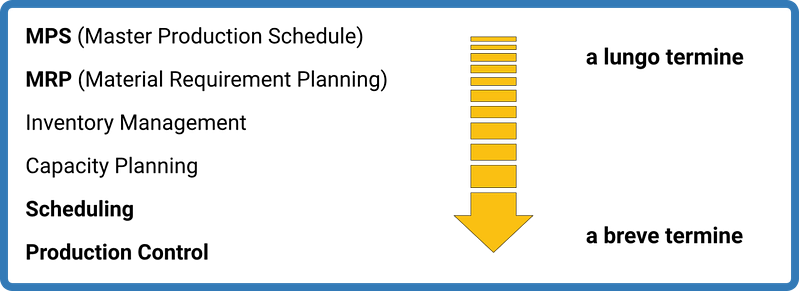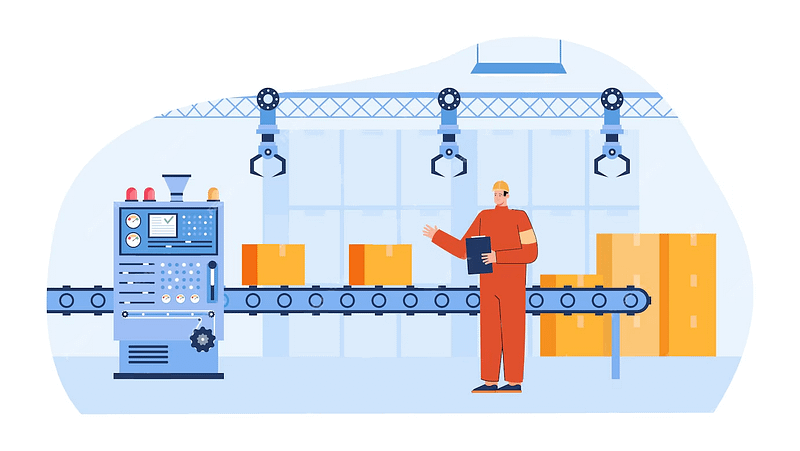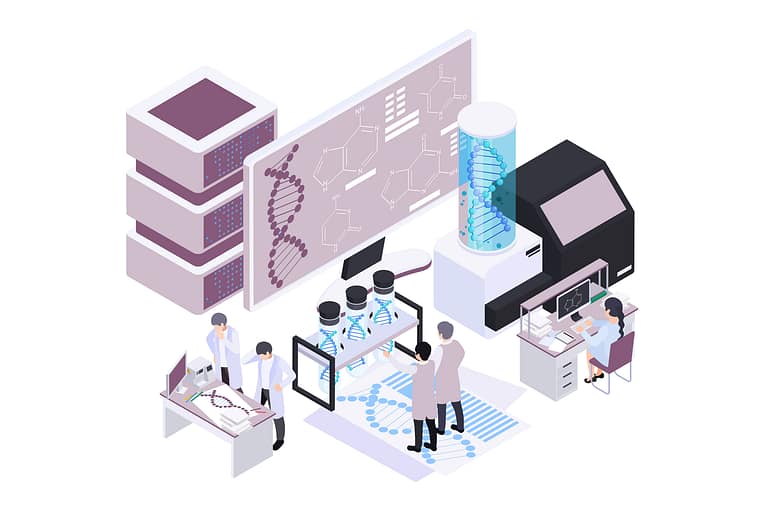MRP, or Material Requirements Planning, is a fundamental methodology for production and inventory management in modern industries. In a rapidly changing economic environment where efficiency and cost reduction are crucial, understanding how MRP works can make all the difference in a company's competitiveness.
In this article, we will explore the definition of MRP, how it works, the benefits associated with its implementation, the challenges that may arise, and the future prospects for this technology.
Definition of MRP (Material Requirements Planning)
MRP is a planning and management system that deals with determining the quantities of materials needed for production and when they should be purchased or produced.
It is based on three main elements: demand for finished goods, available inventory, and time to supply materials.
In essence, MRP allows the company to calculate exactly what it needs to optimize production, reduce costs, and improve customer satisfaction. Accurate planning ensures that the right materials are available at the right time, avoiding both overstocking and understocking.
The importance of MRP in the manufacturing sector
In manufacturing, MRP is vital to operational success. With optimal planning, companies can improve production flow, reduce downtime and increase efficiency. This allows them to respond proactively to customer demand and adapt quickly to market changes.
In addition, a well-implemented MRP system enables companies to maintain tight control over inventories, reducing costs associated with waste and excess materials. As a result, companies can improve their profitability and competitiveness. The ability to forecast and plan ahead not only helps optimize resources, but also helps build stronger relationships with suppliers, as companies can more effectively communicate their procurement needs.
Key components of an MRP
The main components of an MRP system include:
- Bill of Materials (BOM): The BOM is a hierarchical list of all components, raw materials, and subassemblies needed to produce a finished product. Each entry in the BOM includes detailed information about the materials, quantities, and relationships among the various components.
- Inventory level: Includes current quantities of available materials, current orders, and minimum and maximum inventories.
- Production plan: A schedule that defines when and how products are to be produced.
The MRP system processes this data to calculate net material requirements, considering what is already in stock and what is coming in. It then generates production and purchase orders to ensure that materials are available in time to meet the production schedule.
How an MRP system works
The operation of an MRP system consists of several steps that enable effective analysis and planning. The key to the process is a continuous and synchronized flow of information.
Stages of the MRP process
The main stages of the MRP process include:
- Data collection: All necessary information such as projected sales, current orders, and inventory levels are collected.
- Analysis: Data are analyzed to determine appropriate material needs and timing.
- Planning: A plan is made for purchasing materials and scheduling production.
- Monitoring: It is essential to continuously monitor the progress of the process to make real-time adjustments.
Benefits of implementing an MRP system
Implementing an MRP system offers numerous benefits for manufacturing companies:
- Inventory optimization: MRP helps reduce inventory levels, minimizing storage costs and the risk of obsolescence. Only necessary materials are ordered and maintained in inventory, avoiding unnecessary surplus.
- Improved production planning: With accurate MPS and strict control over materials, MRP enables production planning more efficiently, reducing downtime and improving resource utilization.
- Increased on-time delivery: By ensuring that materials are available when needed, MRP helps meet delivery schedules, increasing customer satisfaction and company reputation.
- Reduction in operating costs: Optimal management of materials and production leads to an overall reduction in operating costs, improving the company's competitiveness in the market.
- Increased flexibility: The MRP enables rapid adaptation to changes in demand, facilitating changes to the production schedule without causing significant disruption.
The importance of MRP in Industry 4.0
In the context ofIndustry 4.0, MRP is assuming a crucial role. With the advent of digitization and IoT (Internet of Things), companies have access to real-time data that can significantly improve planning.
The ability to analyze large volumes of data and use advanced technologies, such as artificial intelligence, makes it possible to predict material requirements more accurately and optimize manufacturing operations like never before.
In conclusion, MRP is not just a planning methodology, but a key strategy for companies wishing to remain competitive in an ever-changing market.
Challenges associated with implementing an MRP system.
Implementing an MRP (Material Requirements Planning) system in a company can present several challenges, including:
- Initial complexity: Setting up an MRP requires a deep understanding of the company's production processes, bills of materials and procurement timelines.
- Integration with existing systems: Linking MRP with other business systems such as accounting, sales, and inventory management can be complex and time-consuming.
- Resistance to change: Employees may show resistance to adopting new tools and workflows, requiring training and support.
- Inaccurate data: The success of an MRP depends on the quality of the data entered. Errors in inventory data or sales forecasts can lead to procurement problems.
- Implementation costs: In addition to software, costs may include consulting, training and additional IT resources.
The importance of integrating MRP with ERP, CRM and business intelligence
Integration of MRP with ERP, CRM and business intelligence systems is critical to optimizing business efficiency.
ERP centralizes management processes, allowing a complete view of operations from procurement to production.
CRM, integrated with MRP, facilitates better demand forecasting, improving resource management.
Finally, business intelligence software helps interpret data and make strategic decisions based on in-depth analysis.
This integrated approach provides a 360-degree view of business activities, facilitating a faster and more informed response to market dynamics.
Integrated solutions offered by DueEsseTi
DueEsseTi offers integrated solutions based on Target Cross and Odoo, combining ERP, MRP, CRM and Business Intelligence. These platforms enable smooth and automated management of all business processes, from resource control to production planning.
Target Cross is highly customizable and geared toward complex manufacturing, while Odoo offers a modular suite that is easy to implement and can be integrated with other systems. Both solutions provide companies with tools to improve efficiency and control, adapting to specific production and operational needs.
Target Cross
Target Cross proposes a comprehensive MRP (Material Requirements Planning) system that integrates with the MPS (Master Production Schedule), offering:
- Advanced bill of materials (BoM) management: Starting with the classic hierarchical type of organization, it allows you to immediately and analytically locate the information that is essential for the manufacture of your products.
- Production planning: The MPS enables advance planning of production requirements, based on orders and forecasts.
- Procurement process optimization: Target Cross' MRP ensures that materials are available at the right time to avoid production delays.
- Automation: Reduces manual intervention through automated order management and procurement processes.
- Cost control: Monitors production costs, increasing operational efficiency.
- Total integration: Synchronization with accounting, sales and inventory management modules, improving visibility of business processes

Odoo
Odoo is an advanced, modular ERP platform that enables companies to manage all processes in one place. Odoo's suite of integrated MRP applications includes modules for Manufacturing, Quality, Maintenance, PLM and Repair.
In addition to offering an intuitive MRP solution, Odoo allows scalable integrations with other modules such as CRM, Sales, Inventory, Purchasing and Accounting, enabling companies to control all operations from a single database and exchange information between departments in a synchronized and collaborative manner.

Odoo offers an advanced platform for Material Requirements Planning (MRP) management integrated with the manufacturing module. Key features include:
- Bill of materials management (BoM ): Allows you to define the components required for the production of finished products. You can also define the detail of operations to be performed and add quality control steps to provide clear instructions to workers. Once a production order is started, workers can access instructions through an intuitive tablet interface.
- Automated planning: Long-term planning with the Master Production Schedule (MPS) allows production and procurement to be organized months in advance. Odoo's MPS integrates with actual supply and demand, automatically generating production and purchase orders as needed. Through integration between Odoo apps, the MPS draws data directly from the Sales app to forecast demand and creates purchase orders for materials based on projected needs.
- Real-time tracking: Odoo enables complete tracking of materials by following their lifecycle, from procurement, to the warehouse, to production, to the customer. Complete tracking provides visibility into the entire supply chain and ensures consistent product quality both inside and outside the company.
- Automatic purchase orders: Automatic generation of purchase orders when inventory falls below a predefined threshold.
- Detailed reports: All of Odoo's MRP modules, including Production, Quality, PLM, Maintenance and Repair, offer extensive reporting capabilities to quickly identify areas for optimization.
Conclusions
Material Requirements Planning is an essential tool for manufacturing companies wishing to optimize materials management, improve production planning and reduce costs.
Through the accurate integration of data and forecasts, MRP provides superior control over manufacturing operations, contributing to the long-term success of the company.
Implementing an MRP system requires an initial investment, but the benefits in terms of efficiency, savings and flexibility make it a strategic choice for many companies.



